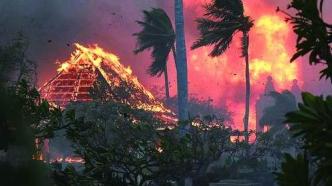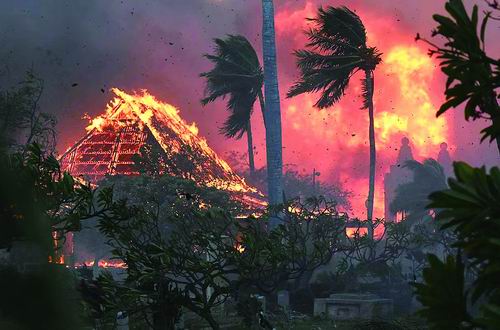

Wildfires in Hawaii have disrupted many scientific research projects on the island. PHOTO CREDIT: Matthew Thayer
A wildfire broke out in the US state of Hawaii on August 8. The fire spread rapidly and engulfed the coastal town of Lahaina in the northwest. So far, wildfires have killed 96 people in the state of Maui.
In the face of the wildfires, Maui's scientific community has mobilized to overcome road closures and power outages caused by the fires and inspect research facilities and experiment stations, Science reported. Some projects had to be interrupted due to wildfires.
Scott Fisher, a restoration ecologist with the Hawaii Land Trust, said the fire was the result of a complex set of factors. He pointed out that Maui has been plagued by drought for many years. The situation was complicated by "unusual" winds blowing on the island last week, coupled with Hurricane Dora passing southwest of the Hawaiian Islands. The island has an abundance of flammable invasive plants, and the forests on the west side of the island, which are drier than the rest, are where the fire started. It's a "perfect recipe for disaster," says ecologist Carla D'Antonio of the University of California, Santa Barbara.
Andrea Kealoha, an oceanographer and director of the Maui Water Quality Laboratory, said wildfires have become more frequent across Hawaii in recent years, but in the past, fires have occurred in remote areas far from homes.
The devastation in Lahaina is unprecedented. Historic Lahaina is the cultural center of Maui and, until before the wildfires, was "the center of the science of whaling in Hawaii," says marine mammal ecologist Marc Lammers. For decades, the Port of Lahaina has provided critical logistical support to Maui's marine science operations. Now, it's full of charred wreckage.
Kealoha hesitates to assess the fire's early impact on Maui's ocean and groundwater. He is applying for rapid-response grants from agencies such as the National Science Foundation and the Environmental Protection Agency to study future changes in water quality around the coast of Maui, where many coral reefs grow. Soil erosion following wildfires could significantly disrupt aquatic ecosystems by releasing sediment into the island's waterways and eventually into the ocean.
Wildfires have also taken a toll on jobs on land. Biologist Arthur Medeiros said that although the wildfire did not affect the Rare Plants Facility at the University of Hawaii at Orinda, some houses and buildings were destroyed by high winds, and "a large number of native endangered plants were severely damaged." Other projects on Maui have also been disrupted to varying degrees.
Changing ecosystems across Hawaii make the islands more vulnerable to wildfires, said Dan Rubinoff, an invasive species biologist at the University of Hawaii. European colonization of Hawaii two centuries ago accelerated the species' invasion, and the numbers of invasive species have not declined since. Many invasive plants are adapted to wildfires—growing rapidly, turning into fuel when wildfires occur, regenerating rapidly, and crowding out native species.
Invasive species pose a barrier to rebuilding old-growth forests that scientists believe are critical to Maui's environmental health and fire resistance. In addition to eliminating or reducing the numbers of these invasive species, Medeiros said, there will be a need to incorporate more low-flammability vegetation into Maui's landscape and restore large swaths of old-growth forest.